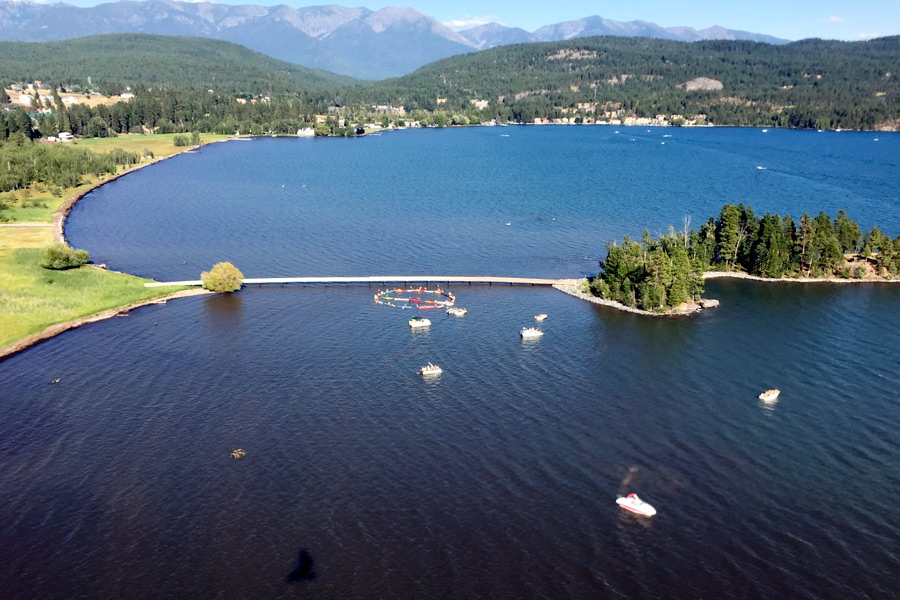Supreme Court Orders Removal of North Shore Bridge
Justices affirm District Court ruling that bridge to private island had invalid permit when built
By Molly Priddy
The Montana Supreme Court reaffirmed a Flathead District Court judge’s determination that a bridge on the Flathead Lake’s north shore must be removed, after a lengthy court battle over the bridge’s permitting and building process.
A local nonprofit, the Community Association for North Shore Conservation (CANSC), has been seeking the bridge’s removal since it was built in 2015, and said they are mostly happy with the justices’ opinion.
“We’re really pleased with the court’s decision. We think it’s the right decision on affirming the district judge’s decision on the merits of the case,” said Dave Hadden, CANSC co-chair.
The Supreme Court order didn’t give CANSC the attorneys’ fees they asked for “for the considerable private cost of forcing the County to follow its own rules,” and Hadden said there may still be a way to get them paid.
Richard DeJana, the Kalispell-based attorney for the bridge’s owners, did not immediately return the Beacon’s calls for comment on the ruling.
The court battle stems from a 2011 development project on the north shore of Flathead Lake, where landowner Jolene Dugan and her father Richard Sortino applied for a Lakeshore Construction Permit to build a bridge connecting their land on shore to the island that formed in the lake’s high point in the summer. The rest of the year, the land is a peninsula.
The Flathead County Planning and Zoning Office approved Dugan’s initial permit and then approved an amended version, and Dugan then built the bridge. In 2015, CANSC filed a District Court petition to overturn the county’s decision on allowing the bridge, arguing its approval was “arbitrary and capricious” and should never have been approved in the first place.
In 2016, Judge Robert Allison ruled that the lakeshore permit was invalid, void from the outset, and that since Dugan built the bridge without a permit, it would have to come out and the area would have to be restored to its natural state.
When appealed, the case went to the Supreme Court, which ruled in favor of CANSC on July 2.
“The (Flathead County Commission) failed to determine whether the bridge created a visual impact discordant with natural scenic values, where those values form the predominant landscape elements,” the justices wrote. “The (Commission)’s decision was seemingly unmotivated—it did not actually consider the bridge’s visual impact as the Regulations require—and its failure to do so was unreasonable, especially when it was considering Dugan’s request to build a 481-foot long, 16-foot wide bridge connecting the mainland to an island.”
The Supreme Court concluded that Allison had made the correct determination when the District Court judge ruled that the bridge should be removed.
Hadden said that aside from continuing to attempt to recoup attorneys’ fees, the CANSC group intends to celebrate the ruling and continue watching the situation.
“We will be visiting with the county planning office to see what steps they will be taking to comply with the court’s order to have the bridge removed,” Hadden said.